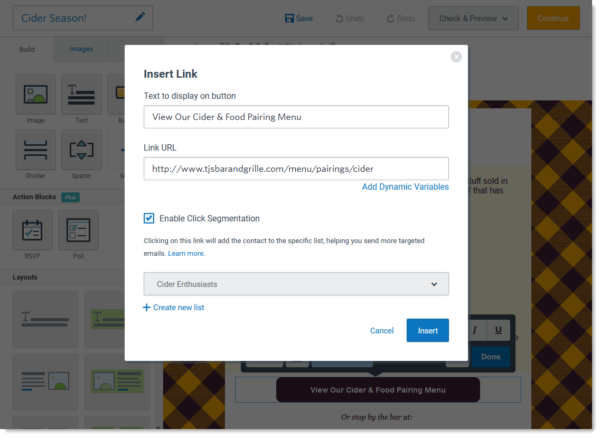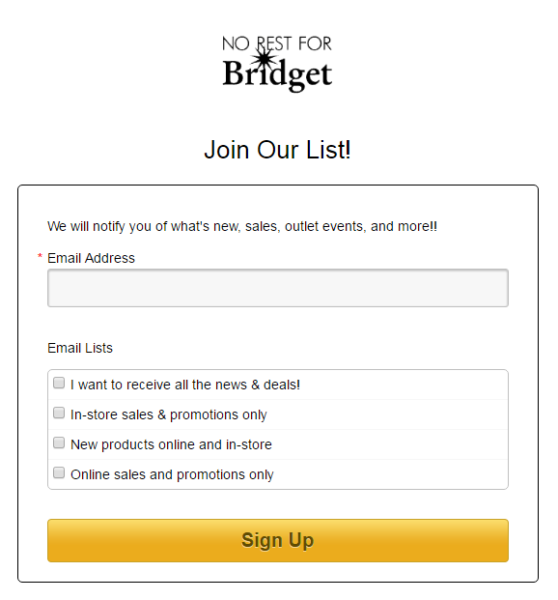How to Use Travel Market Segmentation Effectively
It’s much easier to close a sale when you know exactly what the buyer’s motivation is. That’s the philosophy behind market segmentation — the practice of dividing your audience into smaller groups so that you can speak more directly to their needs and desires.
Travel market segmentation is particularly valuable because traveling means different things to different people. Some travelers want to relax on a beach with a cocktail, some want to trek across Peru or climb Mt. Kilimanjaro, and others want to visit historical sites in Europe. It’s difficult to craft an effective marketing message that will appeal to all kinds of travelers at once.
Get repeat business and find new customers with expert marketing advice and all the tools you need, all in one place.
In this article, you’ll learn to segment your email audience. It’s a simple and effective way to send more persuasive marketing communications and increase your conversions and revenue. If you have any questions about the specific mechanics of segmenting your audience in Constant Contact, you’ll find support in the knowledge base.
What is an email segment?
Imagine you’re a vegetarian. If you saw an email in your inbox from your favorite restaurant titled “Our thickest, juiciest steaks ever!,” would you open it? Probably not. If the restaurant had noted your preference and moved you to a vegetarian segment of their list, they could have tempted you with a subject line about their new butternut squash soup instead.

That’s how email segmentation works. Your subscriber list is divided so that you send relevant messages to each individual rather than sending everyone on your list the same message.
Why is segmenting valuable?
Segmenting your list isn’t difficult, but it does take some time and effort. So, why do it?
People’s inboxes are packed and overwhelmed with marketing messages. And the average person has grown accustomed to messaging that’s very targeted to their needs. If your emails aren’t highly personalized, your customers may ignore your emails or even remove themselves from your list.
When you send general messages about travel, you’re competing with every other tourism business on the market. But when you segment your list — and focus on very tight and customized messaging — you are competing in a smaller niche. For example: If you’re sending messages about solo travel for women over 50, or family-friendly bargain resorts, you narrow the competition significantly.
Segmenting your market also lets you choose words and images that are likely to resonate strongly with your audience. For example: If you’re sending a message about beach resorts to seniors, you might not want to use a photo of a child building a sandcastle.
What are the best travel market segmentation options?
Most digital marketers recommend segmenting in one of three ways:
- Psychographics: Tastes, attitudes, desires
- Demographics: Age, income, education, family status
- Geographics: Where people live or which travel destinations they have in mind
For example: If you operate a travel agency that sells a wide range of trips, you might segment your audience according to the type of travel they’re interested in — such as family trips, adventure travel, or resorts/cruises.
If you offer a discount package to the Bahamas, travel agency market segmentation could have you targeting travel-type groups with varied messaging:
- Family: “Take your family to the Bahamas this spring!”
- Adventure: “Rock climbing, scuba diving, and more!”
- Resorts/Cruises: “White sand beaches and cocktails await.”
You’ll need to segment your list differently if you’re marketing resorts or cruises. Perhaps you can segment by destination, like the Caribbean, the Mediterranean, or Alaska. By budget — bargain, mid-range, luxury — works, too. Segmentation by demographics like families, singles, and seniors can also be effective.
If a cruise line wanted to market a 20% discount offer, they might use a different headline for each demographic-based segment, such as:
- Family: “Bring the kids and save 20%!”
- Singles: “20% off your next solo cruise anywhere in the world!”
- Seniors: “Save 20% on top of your senior discount this month.”
How do you create email segments?
Once you’ve decided which segments to create, how do you get the information you need to sort your audience?
It’s easier than you think. There are several techniques available:
- Past behavior
- Click segmenting
- Surveys
- Opt-in forms
Look at past behavior
If you have existing customers on your list, you can use their past buying behavior as a guide for segmenting.
Use click segmentation
You can use links in your Constant Contact emails to segment your audience using the built-in click segmenting feature.

For example, at the top of your newsletter you might ask them a multiple-choice question:
“What kind of trips are you interested in this year?
- Luxury resorts & cruises
- Family adventures
- Deals & bargains”
Set up each response as a link to more information on that topic. Check the “enable click segmentation” box and select a segment to associate with each link.
Some marketers enable click segmenting on nearly every link they share in a bid to continually refine their lists.
Create surveys
Apart from being a great tool for building travel segments, surveys are a good way to connect with your audience.
Use surveys to gauge customer satisfaction, get feedback, and learn about your audience’s needs and desires. It’s always wise to listen to your customers — and surveys offer an opportunity to do that.
When you create a survey using Constant Contact, you can track responses and download results. And the responses can help you sort your existing audience into segments.
Add questions to opt-in forms
Let new subscribers sort themselves into the right segments by asking them questions on your opt-in form. Add custom fields to your opt-in form and use the results to assign people to the appropriate segments.

How do you apply market segmentation for the travel and tourism industry to your business?
You can apply travel market segmentation to your own email marketing plan in several ways.
Be guided by your strengths
Your segments should be built around your business’s strengths and your target market. If you specialize in luxury resorts, for instance, having an “adventure travel” segment could be a waste of your resources. Create segments that match the categories of travel products you offer or markets you serve.
Target your messaging
Send short and targeted messages to the people most likely to respond to them, rather than sending a long newsletter with a variety of items.
Or send your newsletter to your entire audience, but with a different subject line for each segment. Some travel marketers also rearrange the content for each segment by putting the most relevant content at the top.
Test everything
Experiment with different segments and different types of messages to see which works best for your business. Here are a few testing ideas to get you started:
- Try out different segments.
- Track how a targeted subject line impacts your open rate.
- Compare how many clicks on links your regular newsletter gets versus how many clicks a targeted version brings.
- See whether you get better open and click-through rates from short and focused messages or from newsletters.
Most importantly, track your conversions to see which segmenting methods and messaging styles bring you the most sales.
After setting up travel market segmentation, what’s next?
Travel market segmentation is a smart move for businesses in your industry. Learn which segment to assign your customers to by studying their behavior, surveying them, using click segmenting, or including a custom field in your sign-up forms.
Once your segments are built, tailor your subject lines and emails to your audience’s interests. Keep testing different segments and messages to find what works best for your travel business.
Ready for more? Check out The Download for a complete overview of digital marketing for the travel and tourism industry.
source https://blogs.constantcontact.com/travel-market-segmentation/
No comments:
Post a Comment